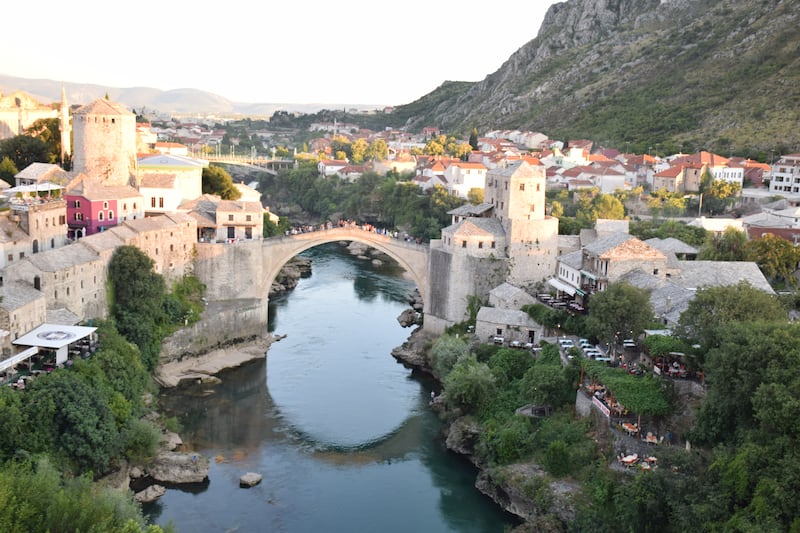It was in 2014, during a summer family holiday in the hilly village of Palamartsa, north-eastern Bulgaria, that travel writer Tharik Hussain came upon the idea for a road trip that would eventually became the book Minarets in the Mountains.
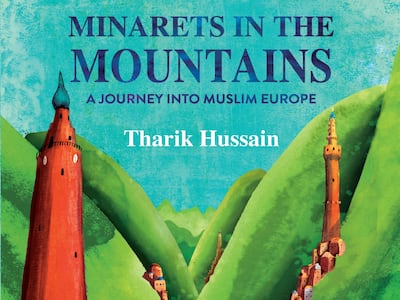
“We were driving in from Romania and started seeing all these minarets, domes and mosques,” says Hussain. They stopped at a couple of the mosques, peered in and realised some of them were still in use. “It was such a surprise and very exciting. I had some inkling that Muslim heritage remained in the country, but I wasn't expecting there to be entire Muslim villages with historic mosques just sitting around in the countryside.”
During the rest of the holiday the family went on day trips to several Muslim villages and towns nearby. Their favourite was Shumen, home to the stunning Ottoman-era multi-domed Sherif Halil Pasha Mosque – also known as the Tombul Mosque – set in lush green hills on the eastern edge of the city and Hussain made a plan to come back to the region.
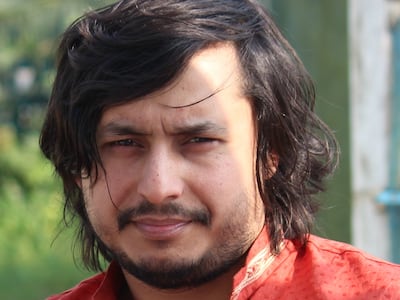
Minarets in the Mountains is the story of a road trip Hussain and his family made a few years later, in 2016 and 2017, through the Western Balkans, and more specifically to three Muslim-majority countries – Bosnia, Albania and Kosovo – and three neighbouring countries with rich Muslim heritage and communities – Serbia, North Macedonia and Montenegro.
What made the encounter with these communities so special for Hussain was the fact that they were not the result of post-colonial migration as in western Europe. “They don’t remember a time when they weren’t Muslim,” he says. As he writes in the introduction to his book: “They were Muslims whose identity had been forged in and of Europe. It was an identity entrenched fully in local society. They were as European as they were Muslim.”
As the child of a Bangladeshi immigrant family in London, Hussain says he grew up “being told I was unwanted in the place I was calling ‘home’”. So he felt a powerful sense of identification with Europe’s Muslims. “Europe's indigenous Muslims have always been made to feel like the 'other' by the Western and historically Christian half of the continent,” he says.
“Meeting these Muslims, seeing them in their own lands, encountering their culture, was empowering for us and made a mockery of the popular and worryingly widely accepted claims that Islam and Muslims are foreign, new or alien to Europe or the idea of Europe.”
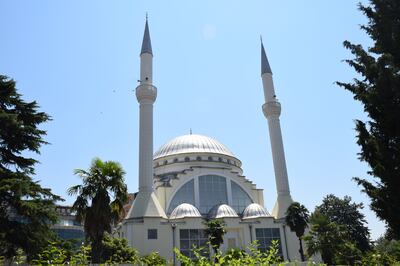
Before setting off on his road trip Hussain looked for English works or books in translation by other Muslim travel writers who had covered the region that he could reference and gain inspiration from. “The region has been written about many times by travel writers such as Michael Palin or, at the turn of the last century Patrick Leigh Fermor,” he says.
“So, the English-speaking world has a perception of this region informed and influenced by these ‘versions’ of the Western Balkans written for the most part from the perspective of white, middle or upper-class men who harbour or harboured, a very particular perspective of the world and Muslim Europe.”
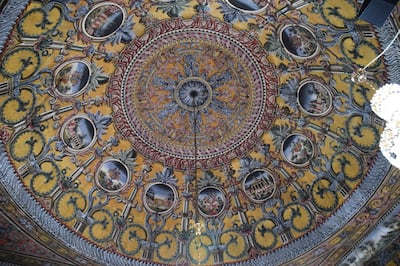
Hussain wanted his travelogue to be written from a Muslim viewpoint. “In other words, by someone who is looking at the region’s Muslim heritage, not just as the remnants of an ancient ‘invasion’ but as his heritage – the way Palin or Fermor might do with Roman or Greek heritage.”
Unable to find any recent Muslim travel writing on the region, Hussain’s guide and companion for his trip became Evliya Celebi, an Ottoman traveller who had written about the area some four and a half centuries ago when the Balkans were part of the Muslim empire.
“The Turkish world knows him well, but only some of his works have been translated,” says Hussain. “He is fun, interesting and, at times, hilarious but, above all, he offers a window into a world that we don’t otherwise have. When I visited the Blagaj Sufi lodge in Bosnia, for example, I was literally following in his footsteps; praying where he prayed, standing where he stood. It felt pretty magical.”
To people living in the UAE wanting to visit the region for the first time, Hussain recommends flying to Bosnia and Herzegovina (flydubai operates direct flights to its capital, Sarajevo) and starting there. “Many young Bosnians speak fluent Arabic, halal food is the norm across Bosnia and almost everywhere you go there are mosques,” he says. Using Sarajevo as an entry point, travellers could also visit places in Albania and Kosovo, he says.
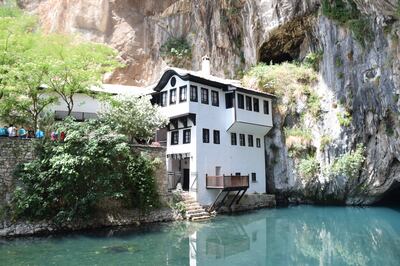
“Cities like Sarajevo and Skopje in North Macedonia really shouldn’t be missed for their depth of historic Muslim heritage, while hidden gems like Berat and Gjirokaster in Albania are also a must – these dreamy mountain escapes are home to the most stunning Ottoman-era houses in the region.”
Hussain says meeting the communities using the mosques and lodges was particularly moving for him, as was “hearing about the horrors of the Bosnian War from actual survivors”.
Hussain hopes his book will bring Celebi, whom he believes deserves to be as well known as Muslim scholar and explorer Ibn Battuta, to new audiences, leading to more of his work being translated. He also hopes that it will highlight how travel writing is never neutral and plays a part in our perception of cultures and places foreign to us, especially when it comes to Muslim regions of Europe and the development of Islamophobic attitudes.
The idea that Muslims and Islam are part of the European historic and cultural landscape needs to be normalised, he says. And celebrating this distinct European Muslim culture, which is very much alive across the region and has its own artistic heritage, food, traditions, saints, sects, histories, heroes, myths and legends, seems a great way to start doing just that.
